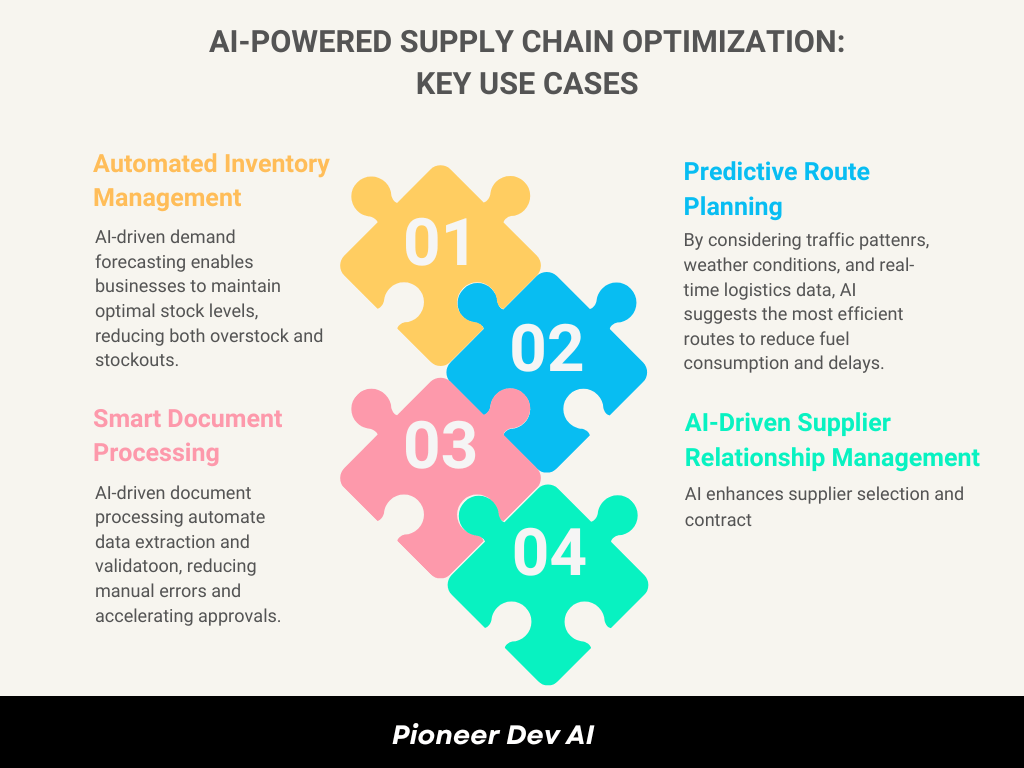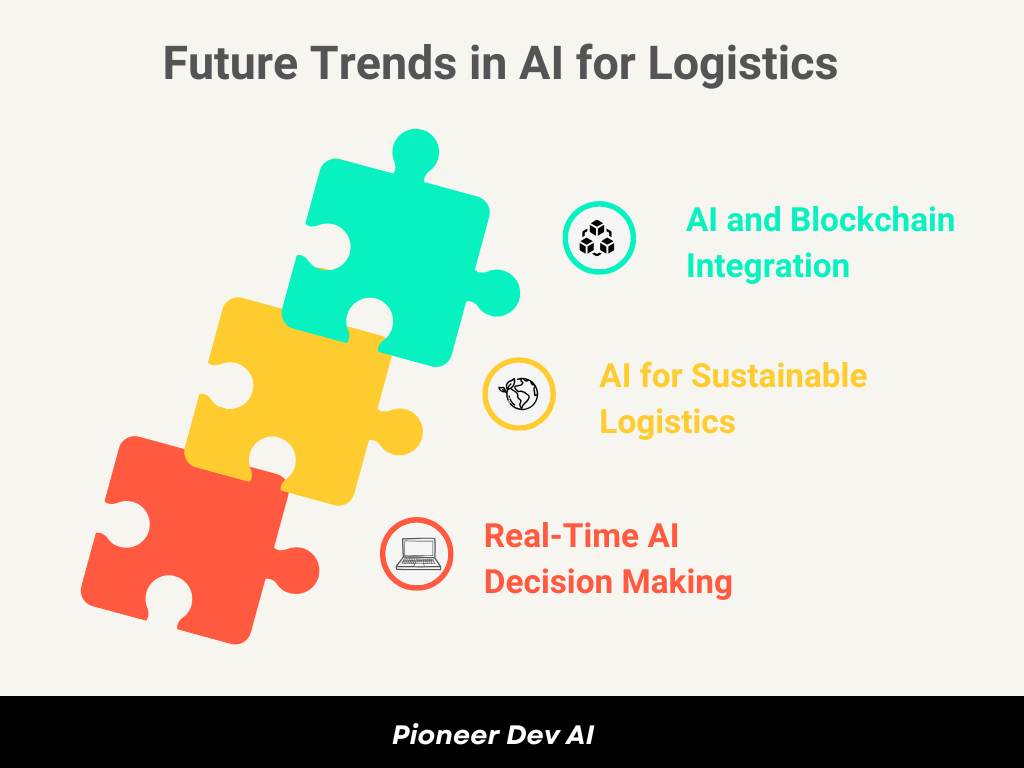Generative AI in Logistics: How AI is Optimizing Supply Chains
The logistics industry is undergoing a significant transformation, driven by the rise of Generative AI. Traditionally, AI in supply chains focused on automation. However, advancements in Generative AI are pushing the boundaries beyond automation into full-scale supply chain optimization. By leveraging AI-powered algorithms, businesses can predict demand with greater accuracy, optimize routes dynamically, and enhance overall operational efficiency.
This shift in the logistics industry enables companies to reduce costs, minimize waste, and enhance customer satisfaction. AI-powered supply chain optimization is not just a competitive advantage but a necessity in an era of increasing global complexity. In this article, we’ll explore how Generative AI is reshaping logistics, key use cases for AI in supply chains, and the future trends that will define the industry’s next phase of growth.
Understanding Generative AI in Logistics
Generative AI refers to AI models capable of creating new data patterns, predictions, and solutions based on existing data. While traditional AI often relies on predefined rules or historical data to analyze and optimize, Generative AI goes further by creating new data patterns, simulating scenarios, and dynamically recommending innovative strategies.
Businesses are leveraging Generative AI to drive logistics efficiency and cost reduction. By analyzing vast amounts of supply chain data, these AI models can optimize routes, anticipate disruptions, and enhance decision-making. For example, leading logistics companies use AI-driven digital twins to simulate and optimize warehouse layouts, reducing operational bottlenecks.
Real-world applications of Generative AI in supply chains include AI-generated demand forecasts, intelligent automation in freight forwarding, and adaptive warehouse management systems. These advancements are helping businesses achieve unprecedented levels of efficiency and scalability.
AI-Powered Supply Chain Optimization: Key Use Cases

Automated Inventory Management
AI-driven demand forecasting enables businesses to maintain optimal stock levels, reducing both overstock and stockouts. By analyzing real-time sales data and market trends, AI ensures a balanced inventory flow, improving operational efficiency.
Predictive Route Planning
AI-powered route optimization minimizes transportation costs while improving delivery times. By considering traffic patterns, weather conditions, and real-time logistics data, AI dynamically suggests the most efficient routes, reducing fuel consumption and delays.
Smart Document Processing
Handling logistics paperwork—such as customs documentation, invoices, and procurement records—can be a time-consuming process. AI-driven document processing automates data extraction and validation, reducing manual errors and accelerating approvals.
AI-Driven Supplier Relationship Management
AI enhances supplier selection and contract management by analyzing supplier performance, cost efficiency, and reliability. Businesses can use AI to identify the most strategic suppliers, improve procurement, and strengthen supply chain resilience.
Future Trends in AI for Logistics

AI and Blockchain Integration
The integration of AI and blockchain is enhancing supply chain transparency and traceability. AI algorithms can analyze blockchain data to detect anomalies, prevent fraud, and optimize logistics operations.
AI for Sustainable Logistics
Sustainability is a growing priority in supply chain management. AI is helping companies optimize routes, reduce fuel consumption, and minimize waste, contributing to more sustainable logistics operations .
Real-Time AI Decision Making
AI-powered control towers are emerging as a game-changer for supply chain visibility. These systems use real-time data to make autonomous decisions, improving response times to supply chain disruptions.
The Role of Large Language Models (LLMs)
Large Language Models (LLMs) are transforming logistics by automating customer inquiries, generating reports, and improving communication between stakeholders. By reducing manual intervention, businesses can focus on strategic decision-making.
Conclusion
The impact of Generative AI in logistics is undeniable. From automated inventory management to real-time AI-driven decision-making, businesses are witnessing a paradigm shift in how supply chains operate. As AI-powered supply chain optimization continues to evolve, companies must embrace these advancements to remain competitive and resilient.
Looking ahead, the integration of AI with blockchain, sustainable logistics initiatives, and intelligent automation will shape the future of supply chain management. Businesses that leverage these technologies today will be better positioned for success in an increasingly complex logistics landscape. To stay ahead, companies should explore AI-driven solutions that align with their operational needs, ensuring efficiency, agility, and sustainability in their supply chain strategies.
If you’re ready to explore AI-driven solutions tailored to your supply chain needs, look no further than Pioneer Dev AI. We can work with you to build smarter, more agile operations.

